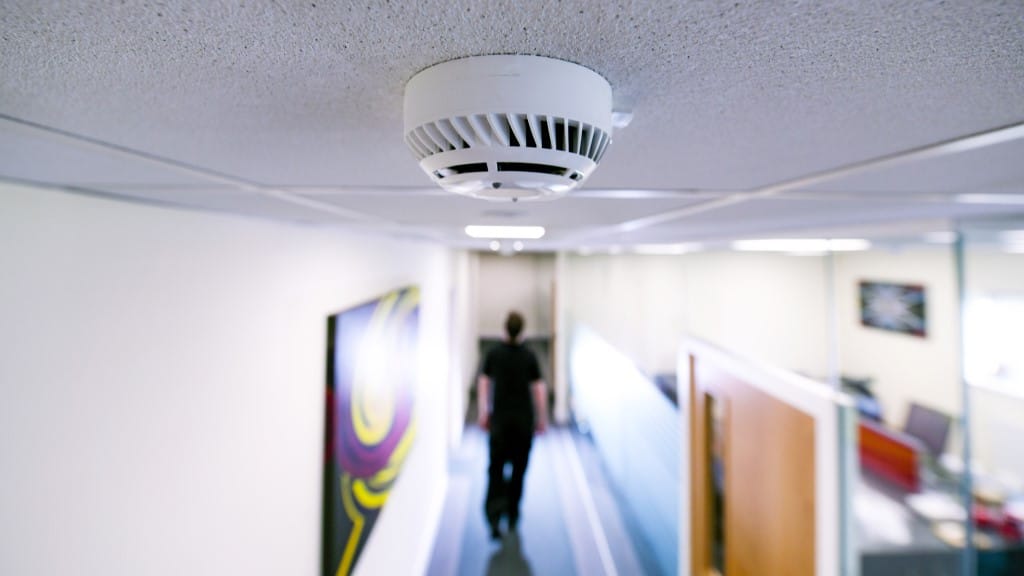Exclusive: The importance of fire system survivability with GFE
- May 10, 2023
- 7:00 am


Iain Hoey
Share this content
Paul Pope, Group Business Development Director at Global Fire Equipment (GFE), takes a closer look at the complex but important subject of fire system survivability
Fire system survivability relates to ability of the entire fire detection and alarm system (FDAS) to perform properly and remain fully operational while under attack by fire. If systems require a phased or complex evacuation, the FDAS needs to be able to continue working while the fire is taking place as this will ensure that the fire management authorities can establish the location of the fire and monitor its spread – information which is critical to ensure a safe and controlled evacuation.
A badly designed FDAS could fail relatively quickly, and failure in one area due to poor survivability could result in the system being unable to activate audible and visual alarms to warn people of the imminent danger. In the case of a phased evacuation, the system might be incapable of further evacuating another alarm zone area where the fire is spreading to. If all the detection control panels are located in one area and there is a fire in that area, for example, the entire system would be wiped out very quickly.
System survivability should be a shared responsibility
Survivability should be a prerequisite of all complex systems, and each building needs to be assessed on a case-by-case basis.
Although some standards touch on survivability – including BS7975, BS8629, BS 5839 and BS 8519 – there is no clear industry performance specification for FDAS survivability and how the standards are actually achieved comes down to the design, installation and system commissioning process. And this is the root of the problem.
Many different factors determine the survivability of a FDAS and unless it has been designed with survivability in mind from the outset – and each individual element of the system is capable of surviving for the length of time required by the building and its evacuation strategy – the risk of system failure is high.
There is a lack of industry understanding about the length of time FDASs should be able to survive. There is a common misconception that the different elements of the FDAS only need to survive for 30 minutes before they can fail, but this is not long enough in complex buildings such as large residential buildings, offices, shopping malls, airports and hospitals etc.
Complex buildings must be actively assessed as a single, coherent system of interdependent components. In these types of buildings, the design and the connectivity of a FDAS and the building’s evacuation system have to last much longer than 30 minutes.
Specifiers need to fully understand the intended use of the building, its detailed fire/evacuation strategy and must specify the survival time of fire alarm/fire-fighting systems. Engineers must understand the fire risk experienced by the whole system to ensure continued fire/evacuation strategy and system design compliance. And those responsible for procurement need to manage expectations of survivability performance.
Using technology to achieve system survivability
One way in which GFE is leading the way in system survivability is our inbuilt mesh network. Our Chameleon multi-master, multi-path peer-to-peer network is a fundamental departure from previous fire alarm control panels’ (FACP) networking arrangements as it creates an extremely resilient infrastructure for the management and interaction between multiple FACPs in a single system.
Every FACP connects directly, dynamically and non-hierarchically to all the other FACPs in the network. This contributes to extremely high resilience, particularly in complex buildings, where higher levels of system are required for life safety and fire-fighting applications, including circuit integrity during a fire.
A fully closed loop and multi-path solution, Chameleon addresses and overcomes the limitations associated with traditional RS485 multi-drop topology. When RS485 multi-drop topology is used, there is no redundancy in the network so in the event of a short circuit in the cables, all interaction and communication between the different FACPs would cease because the information can only travel from node to node in a linear manner, to the left or right. In comparison, Chameleon has point-to-point communication across the entire network.
The FACP forwards every event through all network communications ports, effectively broadcasting the event across the entire network. Each node then records the event on its local event log (up to 10,000 entries). Each FACP can send and receive messages from other FACPs, ensuring high network redundancy because all FACPs are interconnected. If one or more FACP links go down, all the other FACPs participate in the information relay so the entire network will continue working while the individual incident or issue with the FACP/FACPs is resolved.
What next?
Moving forward, we need to push for FDASs to be designed for survivability from the outset rather than as an afterthought. We also need to ensure those responsible for specifying, procuring, installing and using fire and life safety systems have a better understanding of system survivability and accept shared responsibility for it.
For further information on Global Fire Equipment, please visit www.globalfire-equipment.com.



